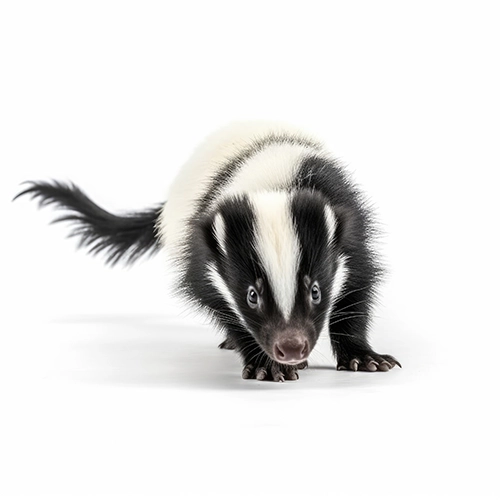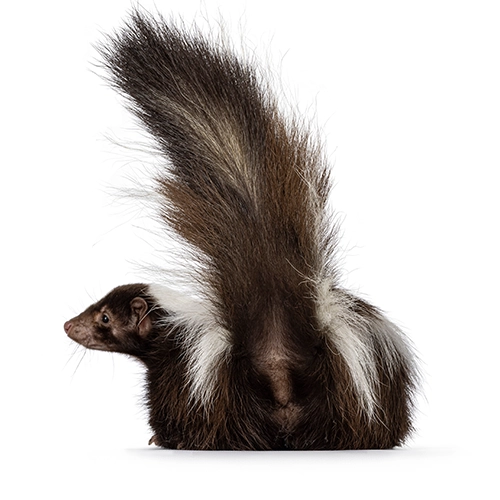Unveiling Different Species, Their Risks, and Effective Management Solutions



When skunks set up a habitat in your Colorado home, they can end up being quite annoying because they love foraging on food, a situation that could make them cause unnecessary disturbances. They are highly adaptable mammals, a trait that can make them live comfortably in your house. As long as there is enough food, these creatures are good to go. Apart from them being annoying, they may carry various diseases. Since you do not want such problems, it makes sense to deal with them as soon as you notice one roaming in your home. This article gives details regarding different kinds of these animal, potential risks they can pose to you and your family, and some good management techniques you can implement to deal with them.
Understanding Skunks
It is a mammal that belongs to the mephitidae family and is popular for its ability to spray an unpleasant liquid to its surroundings through its anal glands. It can be recognized from its black and white to brown or cream colors. They come in different sizes depending on the specific species. However, they have elongated bodies with short legs and can grow between 40 and 94cm long.
They are solitary and love living in small numbers. However, during the colder months of the year, they may gather in search of warmth. It is during such times that they may end up setting a living place in your home, leading to a massive infestation.
There are over 10 species of this mammal and although most of them do not love invading homes, some may do exactly that. While here, they can set up their habitats in different locations such as the garage, basement, crawl spaces, and attic.
Why Skunks Love the Climate and Environment in Colorado!
Since they are quite adaptable and can live anywhere, these mammals are quite common in the area and can be found almost everywhere including urban environments, grasslands, forests, and agricultural areas. Despite this, they prefer those regions with better conditions such as forests because they will get enough food and a proper shelter.
The climate of this region highly depends on the specific location, proximity to Rocky Mountains, and different elevations. The activity of these animals is highly dependent on some of these factors. For instance, during winter, they are more docile and inactive.
The reason behind this is that the temperatures are not favorable and food is not in plenty during this time. During the warmer months of the year, these mammals tend to be more active. In fact, their reproduction rates are quite higher during summer and spring. It is during these times that you are likely to have a bigger infestation problem in your home. When it comes to altitudes and elevations, you will find that they also have a great impact on the population of these pests.



As earlier mentioned, the typography of this area is quite diverse with different elevations. They are more common in lower elevations like foothills and plains than in higher areas like mountains.
Common Skunk Species in Colorado
Although there are over 10 species of this mammal, only a few can be found here. This part of the article gives some common ones you can find in the state.
Striped
This is the most common in the state and it belongs to the mephitis genus. It can be found in elevations of up to 10,000 feet. They come in different colors but the most common is their black fur. This species also has a white stripe that starts from the head all the way to the tail. It prefers setting up habitats in open fields, brushy corners, and mixed woodlands.
Hog-Nosed
This one belongs to the conepatus genus and can be recognized from its white back and tail and black underparts. They come in different sizes but it can be said that the males grow between 50 and 90cm while the females can grow between 50 and 70cm in length. They love setting up habitats in bottomlands or watercourses that have a lot of vegetation cover.
Western Spotted
Unlike the striped, this one is a bit smaller as it can only grow between 35 and 45cm in length. It can be recognized from its black and creamy white stripes. It can be found in different areas such as farmlands, open areas, and woodlands.
Eastern Spotted
This one is a bit rare in the state but can be recognized from its four stripes on the back that form a pattern, and hence the name spotted. It also has a black-tipped tail, which is usually shorter compared to that of other skunks. It can be found in areas such as woody shrubs, forest edges, and prairie grasslands.



Signs you are dealing with an Infestation
Now that you have understood the different species you are likely to experience in the state, it is now time to have a look at different signs you should watch out for that will tell you that there could be many skunks in your homestead.
The first obvious thing is seeing just one roaming around. At first, you might not be bothered after seeing one of them. However, although they are solitary animals, it could potentially mean that there could be others hiding elsewhere. Seeing many of them, on the other hand, definitely means they have taken up your house. Another thing to look out for is a strong odor, especially coming from the basement or attic.
These animals often emit a spray that smells quite bad, if they feel threatened. This can be smelt in those areas where they often frequent. In addition to this, they can produce noises when doing activities like digging, scratching, or rustling. You may notice these noises or even damage to structures that is caused by such activities.
Potential Risks of Having Skunks at Home
They are not only intimidating and off-putting to look at, but these mammals also pose great risks. One such risk is that they may cause extensive damage. This comes about because they may dig up holes in your property while creating habitats or looking for food. Through this activity, they can cause damage to porches, decks, foundations, and other structures. Apart from this, they can carry diseases like leptospirosis, rabies, and distemper. These can be transmitted to you and your loved ones. Furthermore, they may cause disturbances when raiding things like garbage cans. Such nuisance activities can make you lose your peace.
DIY Removal Strategies
Before you get started, it is good to note that dealing with them can be a great challenge. However, you can still implement some techniques to deal with them by yourself. The first thing you can do is make use of repellents that can deter these animals. Some options for this that you can implement include predator urine, pepper spray, and ammonia-soaked rags. You could also purchase some repellents from the store that are specifically made for these mammals. Apart from this, you might want to consider using live traps to catch them. You can set humane traps in your compound and make use of bait like canned fish or cat food to attract. Once caught, you should release them a couple of miles away from your living area.
Reasons to Hire Experts
As you may have realized, dealing with skunks can be quite overwhelming. They usually try to avoid any confrontations with humans and they will definitely be hard for you to catch and remove them from your property. Due to this, it is a good idea to call in the professionals and let them help you.
Experts have years of experience and have knowledge regarding these mammals. They therefore know many things about how to deal with them safely. They also follow set rules and regulations by the state about dealing with such animals. In short, you can expect that they will do an excellent job for you.



Preventive Measures You Can Take
Since you probably do not want these nuisance mammals in your Colorado house ever again, it is best that you consider implementing preventive measures to ensure they will never be a problem for you. The first thing you can do is seal any entry points that they may potentially use for access. These could be like gaps under porches, sheds, or decks. Since they come to your house in search of food, you should remove any food sources like pet food, birdseed, or general garbage. These should be properly sealed and kept away from potential reach.
Skunks in your Colorado home can be a huge nuisance. They have the potential to cause significant damage and make you lack peace of mind because of the noises they produce, and just knowing there are some uninvited guests in your house. To prevent such issues, you want to call in the experts to remove them from your property in the safest way possible. Professionals have the needed skills and expertise to do an excellent job and ensure you do not have to deal with them ever again.
If you think skunks are causing you problems in Colorado Springs, CO or anywhere in Teller County or El Paso County, please do not hesitate to
contact us today! We will help resolve your problem quickly, safely, and at affordable rates.